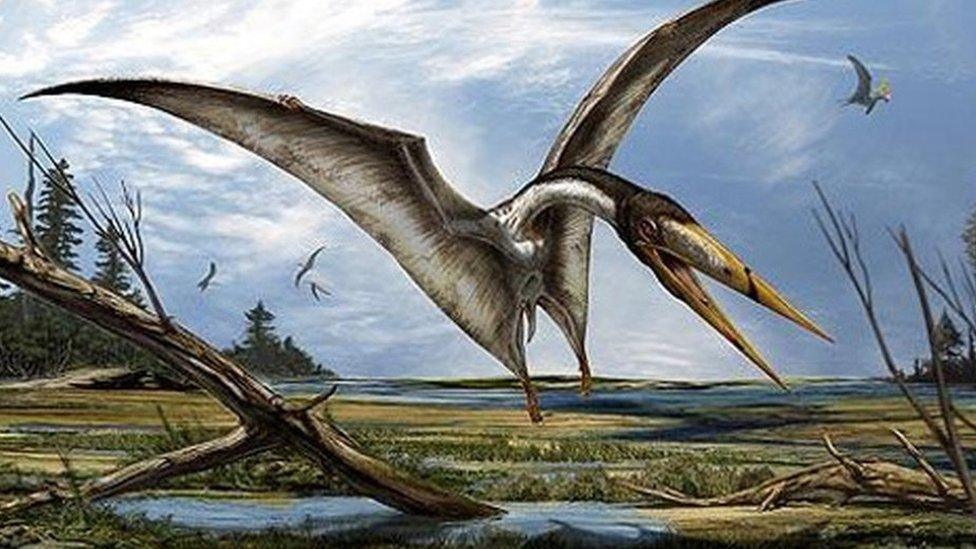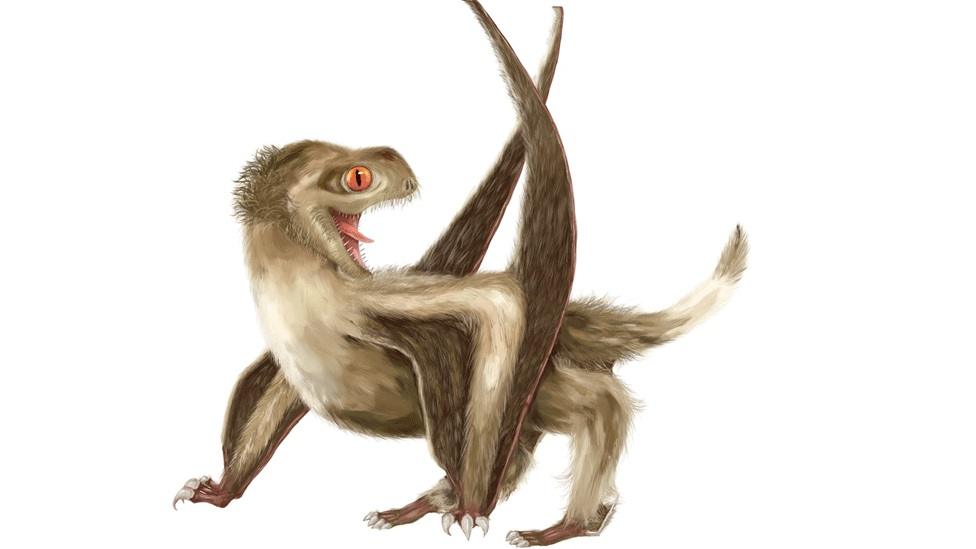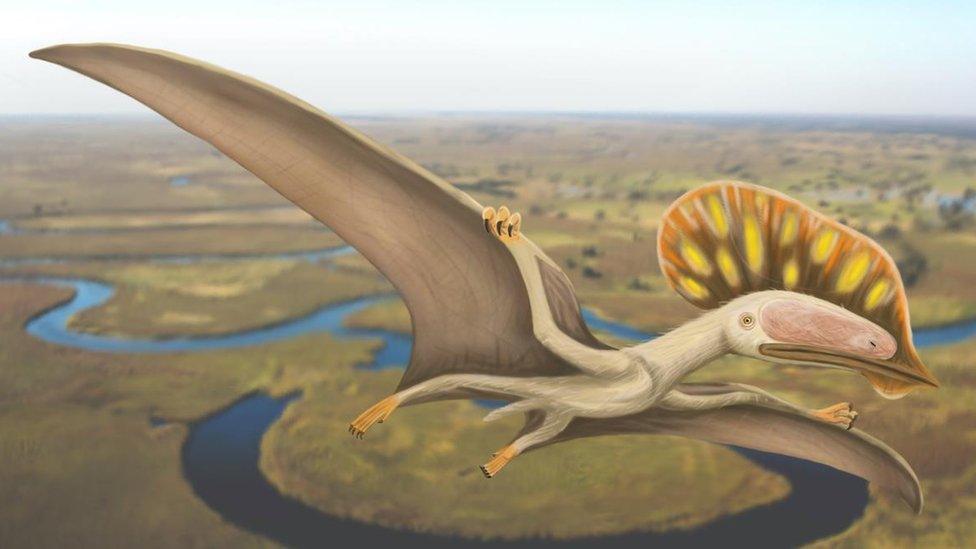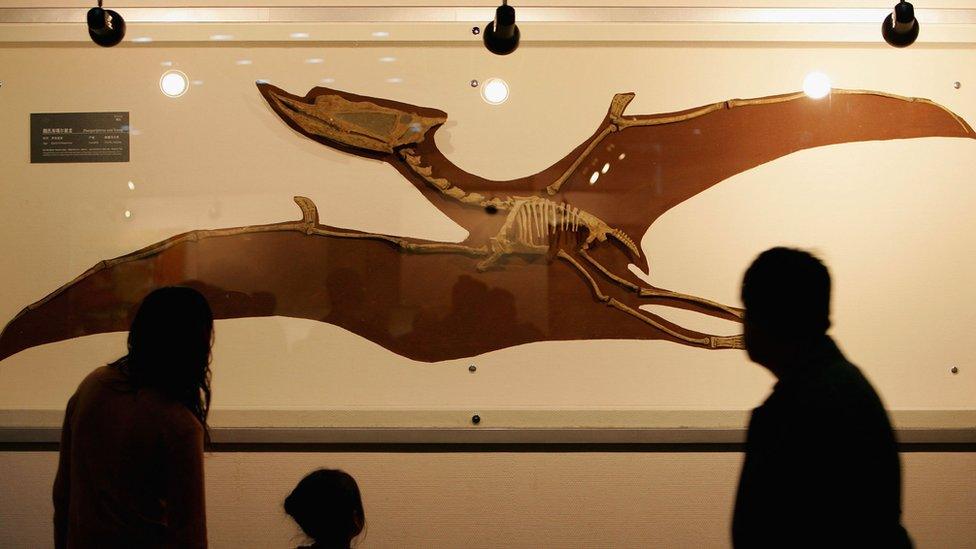Student finds mystery pterosaur in Cambridgeshire fossils
- Published

Roy Smith holding a jaw of a pterosaur, which is a close relative of the type he found
A student discovered a new species of prehistoric "flying lizards" after searching through fossil collections from more than 100 years ago.
PhD student Roy Smith, 26, discovered the mystery pterosaur after examining collections at the Sedgwick Museum of Cambridge and Brighton's Booth Museum.
The fossils found in Cambridgeshire were thought to be of shark spines, but Mr Smith spotted key differences.
His supervisor Prof Dave Martill said it was an "extremely exciting" find.
University of Portsmouth student Mr Smith was given access to the collections made up of fossils from a site in the Cambridgeshire Fens and found by workmen between 1851 and 1900.
He realised the fossils were actually fragments of toothless pterosaurs' jaws.
Paleontological mystery
"One such feature are tiny little holes where nerves come to the surface and used for sensitive feeding," said Mr Smith.
"Shark fin spines do not have these, but the early palaeontologists missed these features.
"Two of the specimens discovered can be identified as a pterosaur called Ornithostoma, but one additional specimen is clearly distinct and represents a new species - it is a paleontological mystery."

It is thought that the pterosaur identified by Mr Smith would have looked like the North African Alanqa pterosaur species
He said the new species would be unable to be named due to the specimen being too fragmented.
It was unlikely any more remains would be found as the rock was no longer exposed, Mr Smith added.
But he vowed to search for more pieces of the reptile in other museum collections once Covid-19 restrictions were lifted.
Prof Martill said the small piece of the unknown creature was "tantalising".
"This is extremely exciting to have discovered this mystery pterosaur right here in the UK," he said.
"This find is significant because it adds to our knowledge... but also demonstrates that such discoveries can be made, simply by re-examining material in old collections."
The results have been published in The Proceedings of the Geologists' Association, external.

Find BBC News: East of England on Facebook, external, Instagram, external and Twitter, external. If you have a story suggestion email eastofenglandnews@bbc.co.uk, external
- Published17 December 2018

- Published28 May 2020

- Published1 December 2017

- Published22 January 2016
